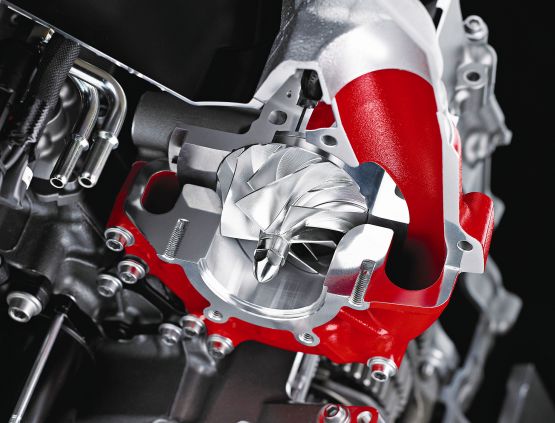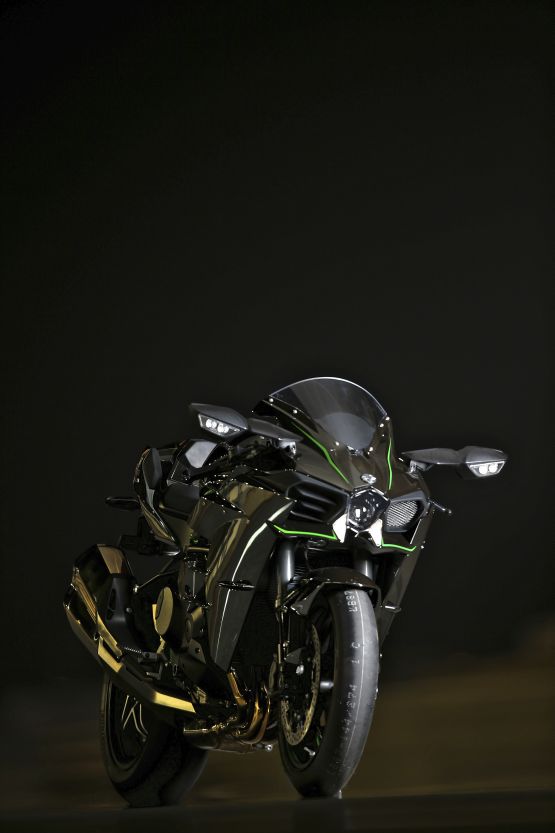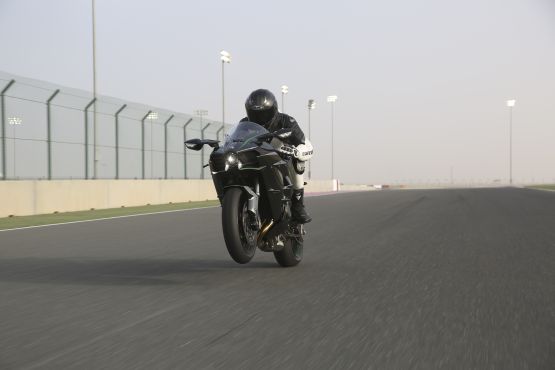Any suggestion that the H2 is a slightly more comfy sports bike disappears the moment you open its throttle in the lower gears. The response is sudden, to say the least, as the supercharger kicks in to send the bike lurching forward with an abruptness that makes fine control difficult. Aiming the H2 around the Losail Circuit for the first few laps, my mind flashed back to the morning’s press conference and the phrase: “demands the razor-sharp reactions of an experienced rider”. The words were written about the original 750-cc H2 two-stroke triple of 1972 but ring true of its latest descendant.
The Ninja is as demanding as it’s powerful, but you learn to deal with it to some extent. And one thing’s for sure: this thrilling supercharged brute demands maximum concentration. I was wary of opening the throttle at the apex of the turns (not least because one fast and experienced rider had high-sided himself into hospital the day before) and found the best solution was to finish braking slightly early, then dial in a little throttle and boost before the apex of a turn so the bike was steady at full lean and able to accelerate more smoothly.
As the boost built (not that I could tell from the small, hard-to-read gauge) and the bike tore forward, it was difficult to be sure exactly what the traction control was doing, except that it usefully kept the front wheel near the ground as the Ninja catapulted down the following straight. Its monstrous mid-range power delivery meant it revved even quicker than normally aspirated bikes, its quick-shifter (which worked flawlessly, but only on up-shifts) helped feed it gears, and its respectably tall screen meant I could keep my head out of the wind-blast. The muted sound of the standard exhaust was soon lost to the wind, but the supercharger compensated with a twittering sound on a closed throttle.
With a kerb weight of 238 kg the H2 is notably heavier than a top sports bike, but it handled very well. Kawasaki say they chose the trellis frame partly to aid cooling but mainly because it allows a little flex that aids stability at very high speeds. The bike lived up to that by being rock-solid in a straight line and composed in bends, especially after the mechanics had firmed up both ends slightly. The Öhlins electronic steering damper, which adjusts according to speed and acceleration, doubtless also contributed.
The relatively wide bars helped with manoeuvrability, and Bridgestone slicks (which are standard fitment on the H2R; the H2 will come with street-legal Battlax RS10FGs) ensured heaps of grip. There was plenty of braking power too, with the front combination of 330-mm discs and Brembo radial callipers biting hard and refusing to fade even when the H2R was repeatedly hauled down from almost 320 km/h, though the ABS cut in earlier than the best rival systems.





Leave a Reply